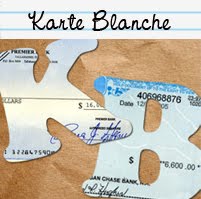Even though it is April, and most of us are thinking about warming temperatures, spring rains, and seasonal allergens caused by blossoming trees, it is still snowing in New Hampshire. At least it was in the small town of Piermont, where Brent and I stayed for the second half of our New England adventure.
Our lovely hosts Alex and Kristy showed us all of the fun to be had in the country as the snow was starting to thaw. First we went on a snowshoe expedition in the hilly forest behind their property. This was my first snowshoeing experience. Apparently there have been many breakthroughs in snowshoe technology over the years because our shoes didn't look like the tennis-rackets-strapped-to-your-feet that I picture when I hear the word 'snowshoe.' Instead, they look like mini-sleds with metal teeth on the bottom. When you walk through fresh snow with them on, it makes a sound like you're biting into a crisp apple. I really liked it!
Brent, Alex, Kristy, & the neighbor's dog Toby, who followed us for the whole adventure.
Along our snowshoe route, we saw a variety of animal tracks in the snow. Unfortunately, we didn't see any of the animals in person, but it was nice to know that they were somewhere close by.
Moose Tracks
Otter Tracks!
Otter Tracks on video!
Another great reason to visit New Hampshire in April is because it is maple syrup making season! Alex & Kristy's neighbor, Ed, loves to make his own maple syrup. He taps the maple trees in his yard, and hangs a bucket underneath to collect the tree sap. When sap comes out of the tree, it is clear in color and has a very subtle sweetness, but basically tastes like weak sugar water. In order to make it into maple syrup as we know it, you have to boil it down. It takes 30-40 gallons of tree sap to make one gallon of maple syrup. Suddenly I was beginning to realize why authentic maple syrup is so expensive. It is a very labor-intensive process.
Ed showed us his "sugar house", which is a cabin where he boils tree sap into maple syrup. Ed's boiler was homemade. It consisted of a barrel laid on it's side with a door in the front to load in firewood, and a flat pan on top that was about 6 inches deep, and divided into 3 compartments. Ed pours the sap into the first compartment. As it heats up, it begins boiling and moves into the 2nd and 3rd compartments. The compartments create more hot surface area, and therefore make the sap boil into syrup faster. It is still a very slow process and takes hours of careful boiling until the water evaporates.
Once the sap has boiled down to syrup, Ed must remove it from the boiler quickly before it turns too thick and ruins his pan. Many sugar houses go up in flames if the syrup is left to boil, unattended.
Spigot at the bottom of the pan where boiled syrup is collected.
Ed has quite an impressive maple syrup collection. He has over 100 containers! Many of them are tin and vintage. I was really excited by the old log cabin syrup that actually comes in a log cabin shape!
Ed and me with his maple syrup collection.
Ed's collection has over 100 different kinds!
Log Cabin syrup in a log cabin shape! Awesome!
Our last Piermont adventure was one for the books! We went to Robie Farms to see how they make their raw milk cheeses! We met Mark Robie, who showed us the giant bowl where they add the milk, enzymes, and rennet. We also saw the press where the cheese is pressed into rounds. The most exciting part of the tour was a visit to the cheese cave! We bought the Toma and the Piermont cheeses, and they were both excellent!
Me inside the cheese cave!
So much delicious artisanal cheese! Brent can I build a cheese cave at your house, please?
Who would have guessed that there was so much to see and do in a very small New Hampshire town? I had a wonderful time, and it was so great getting to know Alex and Kristy, too!














No comments:
Post a Comment